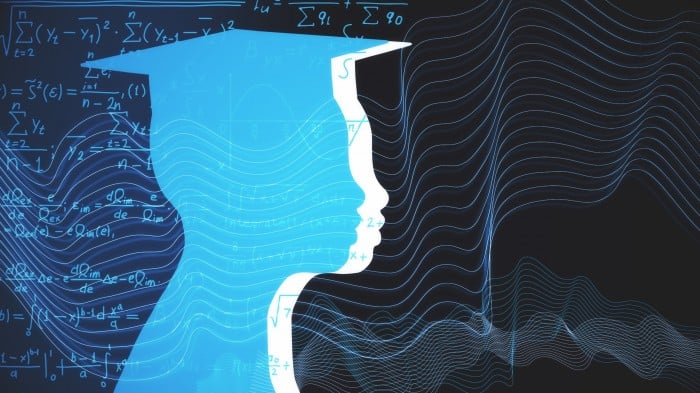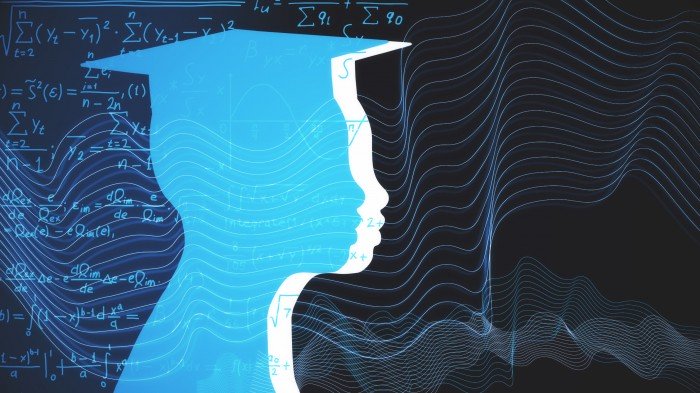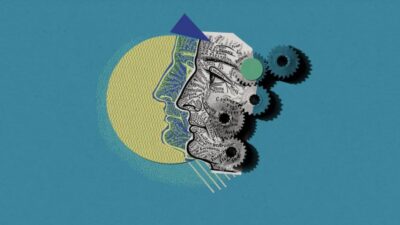Educators today are in agreement: They need an AI strategy. But many institutions don’t know how to implement one—or where to start.
By Dan Ayoub
Artificial intelligence (AI) is a major influence on the state of education today, and the implications are huge. AI has the potential to transform how our education system operates, heighten the competitiveness of institutions, and empower teachers and learners of all abilities.
Dan Ayoub is general manager of education at Microsoft.
The opportunities for AI to support education are so broad that recently Microsoft commissioned research on this topic from IDC to understand where the company can help. The findings illustrate the strategic nature of AI in education and highlight the need for technologies and skills to make the promise of AI a reality.
The results showed almost universal acceptance among educators that AI is important for their future—99.4% said AI would be instrumental to their institution’s competitiveness within the next three years, with 15% calling it a “game-changer.” Nearly all are trying to work with it too—92% said they have started to experiment with the technology.
Yet on the other hand, most institutions still lack a formal data strategy or practical measures in place to advance AI capabilities, which remains a key inhibitor. The finding indicates that although the vast majority of leaders understand the need for an AI strategy, they may lack clarity on how to implement one. And it could be that they just don’t know where to start.

David Kellermann has become a pioneer in how to use AI in the classroom. At the University of New South Wales in Sydney, Australia, Kellermann has built a question bot capable of answering questions on its own or delivering video of past lectures. The bot can also flag student questions for teaching assistants (TAs) to follow up. What’s more, it keeps getting better at its job as it’s exposed to more and different questions over time.
Kellermann began his classroom’s transformation with a single Surface laptop. He’s also employed out-of-the-box systems like Microsoft Teams to foster collaboration among his students. Kellermann used the Microsoft Power Platform to build the question bot, and he’s also built a dashboard using Power BI that plots the class’s exam scores and builds personalized study packs based on students’ past performance.
Educators see AI as instrumental to their institution’s competitiveness, yet most institutions still lack a formal data strategy to advance AI.
Kellermann’s project illustrates a key principle for organizations in nearly every industry when it comes to working with AI and machine learning—knowing where to start, starting small, and adding to your capabilities over time. The potential applications of AI are so vast, even the most sophisticated organizations can become bogged down trying to do too much, too soon. Often, it comes down to simply having a small goal and building from there.
As an AI initiative gradually grows and becomes more sophisticated, it’s also important to have access to experts who can navigate technology and put the right systems in place. To gain a foothold with AI, institutions need tools, technologies, and skills.
This is a big focus for our work at Microsoft—to support educational institutions and classrooms. We’ve seen the strides some institutions have already taken to bring the potential of AI technologies into the classroom. But we also know there is much more work to do. Over the next few years, AI’s impact will be felt in several ways—managing operations and processes, data-driven programs to increase effectiveness, saving energy with smart buildings, creating a modern campus with a secure and safe learning environment.
But its most important and far-reaching impact may lie in AI’s potential to change the way teachers teach and students learn, helping maximize student success and prepare them for the future.
Collective intelligence tools will be available to save teachers time with tasks like grading papers so teachers and TAs can spend more time with students. AI can help identify struggling students through behavioral cues and give them a nudge in the right direction.
AI can also help educators foster greater inclusivity—AI-based language translation, for example, can enable more students with diverse backgrounds to participate in a class or listen to a lecture. Syracuse University’s School of Information Studies is working to drive experiential learning for students while also helping solve real-world problems, such as Our Ability, a website that helps people with disabilities get jobs.
AI has the power to become an equalizer in education and a key differentiator for institutions that embrace it.
Schools can even use AI to offer a truly personalized learning experience—overcoming one of the biggest limitations of our modern, one-to-many education model. Kellermann’s personalized learning system in Sydney shows that the technology is here today.
AI has the power to become a great equalizer in education and a key differentiator for institutions that embrace it. Schools that adopt AI in clever ways are going to show better student success and empower their learners to enter the work force of tomorrow.
Given its importance, institutions among that 92% should start thinking about the impact they can achieve with AI technologies now. Do you want to more quickly grade papers? Empower teachers to spend more time with students? Whatever it is, it’s important to have that goal in mind, and then maybe dream a little.
This is a movement still in its early days, and there is an opportunity for institutions to learn from one another. As our customers build out increasingly sophisticated systems, Microsoft is learning and innovating along with them, helping build out the tools, technologies, and services to turn the vision for AI into reality.
Source: MIT Technology Review




